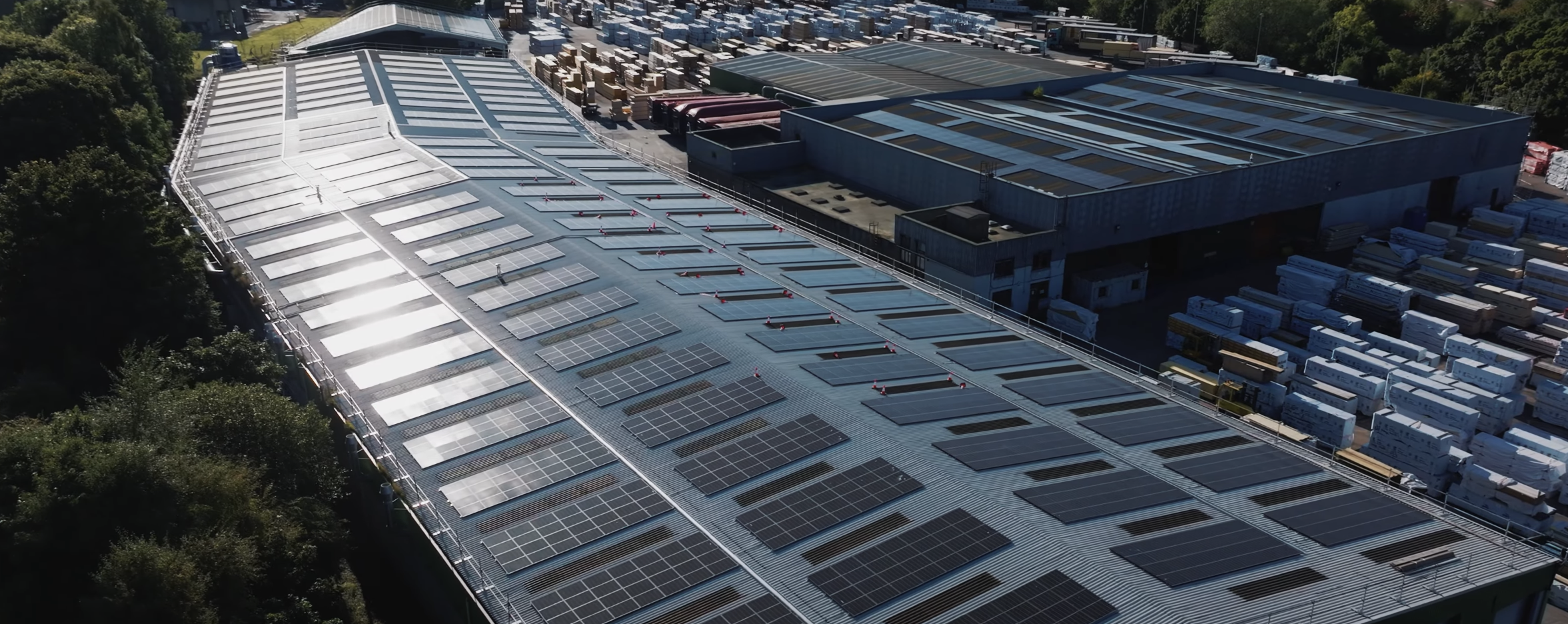Solar for Commercial Properties – Unlock the Value of Your Roof
Make your building work harder with rooftop solar. Whether you're investing to improve EPC ratings or looking to cut energy costs, BES helps commercial property owners, landlords, and developers turn unused roof space into long-term savings and performance. Fund with capex, asset finance, or a no-upfront-cost Power Purchase Agreement (PPA).
Why Commercial Property Owners Are Turning to Solar
Solar energy is no longer just a sustainability initiative - it’s a smart commercial strategy. For landlords, developers, and occupiers, rooftop solar can reduce costs, enhance compliance (like EPCs), increase asset value, and generate long-term returns from unused roof space.
Save Money on Energy
Rooftop solar reduces electricity bills by offsetting grid energy with clean, self-generated power.
Boost Asset & Rental Value
Buildings with lower energy costs and better EPC ratings are more valuable, more lettable, and future-proofed.
Meet Regulatory Pressures
With EPC and sustainability requirements tightening, solar is a cost-effective way to improve compliance and avoid penalties.
Achieve ESG Goals
Demonstrate environmental leadership across your portfolio without needing to manage complex installs or tech.
How Solar Power Works (Simple Overview)
-
Photovoltaic (PV) panels are installed on suitable parts of your roof to capture energy from sunlight - even on cloudy days. here
-
The panels generate direct current (DC), which is converted into usable electricity (AC) by an inverter. This power feeds into your building’s existing electrical system.
-
Electricity from the panels is used within the building during the day. This reduces the amount you buy from the grid.
-
If your system generates more power than you use, the excess can be sold back to the grid - or managed through a smart export arrangement.
-
Solar doesn’t replace your grid connection - it reduces how much you rely on it. Your system works seamlessly in the background.
Option 1:
Buy Outright (Capex)
Owner-occupiers or landlords with long-term hold strategies
Pay for the system upfront and benefit from the full return on investment. You’ll own the system, receive all the energy savings, and take any tax or depreciation benefits available.
Pros:
Maximum long-term savings
You own the asset
Greater control and flexibility
Cons:
Requires capital
You handle maintenance
Option 2:
Power Purchase Agreement (PPA)
Landlords or developers who want solar benefits with no capital outlay
A third party funds, installs, and maintains the solar system. You simply agree to buy the electricity it generates at a fixed, competitive rate - typically lower than what you'd pay to the grid.
Pros:
Zero upfront cost
Immediate energy savings
No maintenance or system risk
Improves EPC and ESG profile
Cons:
You don’t own the system until the term ends
Typically 15–25 year contract
Not available for every site (we can assess)
Option 3:
Asset Finance or Loan
Businesses who want to spread the cost but still own the system
Fund the system via a business loan, asset finance, or green lending facility. You own the system from day one, but spread payments over time.
Pros:
No large upfront payment
You still benefit from energy savings and ownership
Finance may be offset against tax
Cons:
You carry debt
Requires lender approval and due diligence
What’s Right For You?
BES is independent - we don’t install systems or push finance. Our role is to help you:
Understand your options clearly
Compare returns and risks
Choose a funding route that aligns with your strategy
FAQ’s
-
Not necessarily. If you're a long-term leaseholder with roof access and responsibility for energy costs, there are still options - including PPAs - that may be viable with landlord approval.
-
In most cases, no. Installation is typically carried out with minimal disruption, and systems are designed to work alongside existing energy supplies without affecting daily use.
-
Solar can be an asset - especially if it improves the EPC rating or lowers operating costs. PPA contracts can often be transferred to the new owner, subject to agreement.
-
A desktop feasibility review takes just a few days. From there, full implementation (depending on funding route and approvals) can take 2–6 months. We help you manage the timeline.




